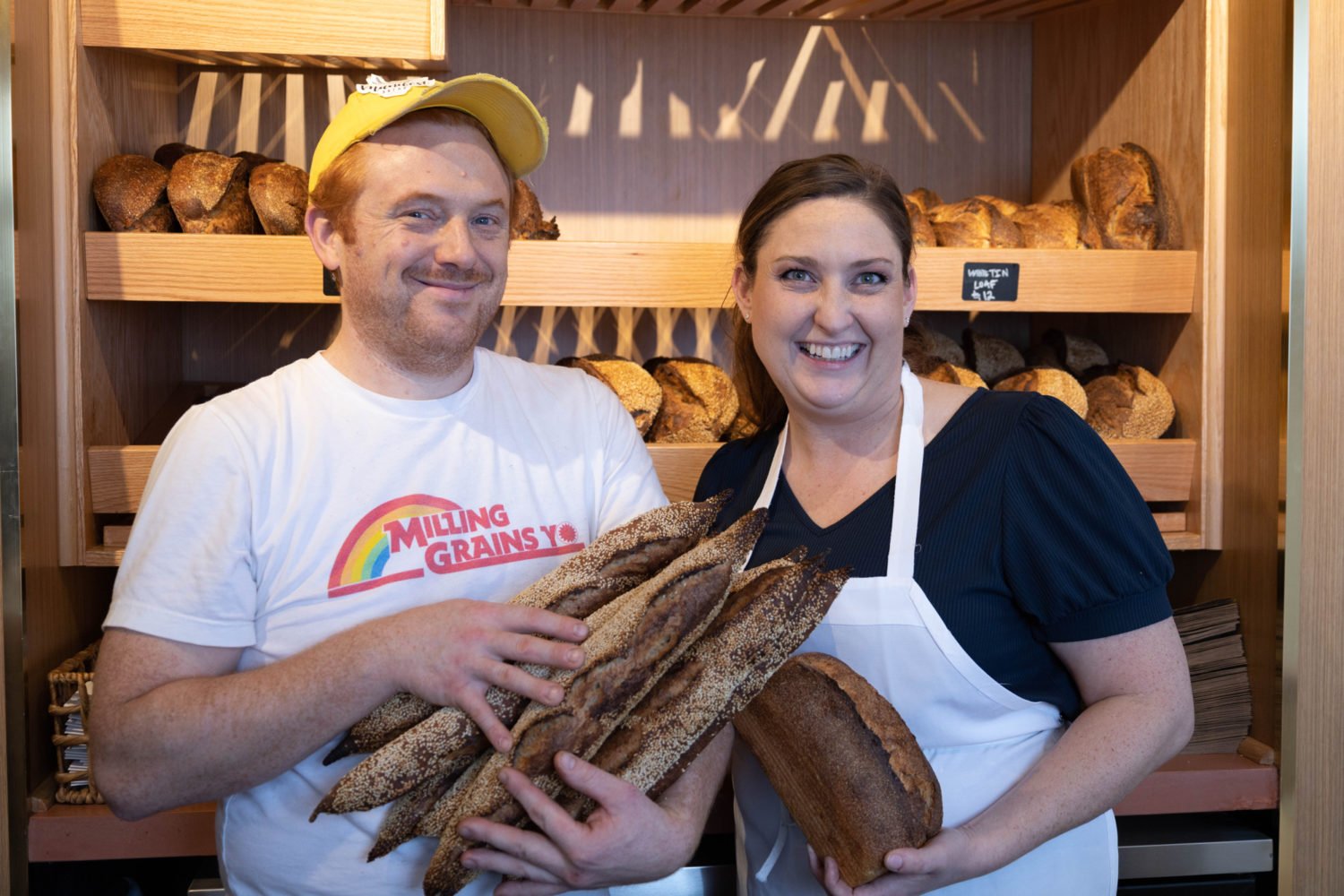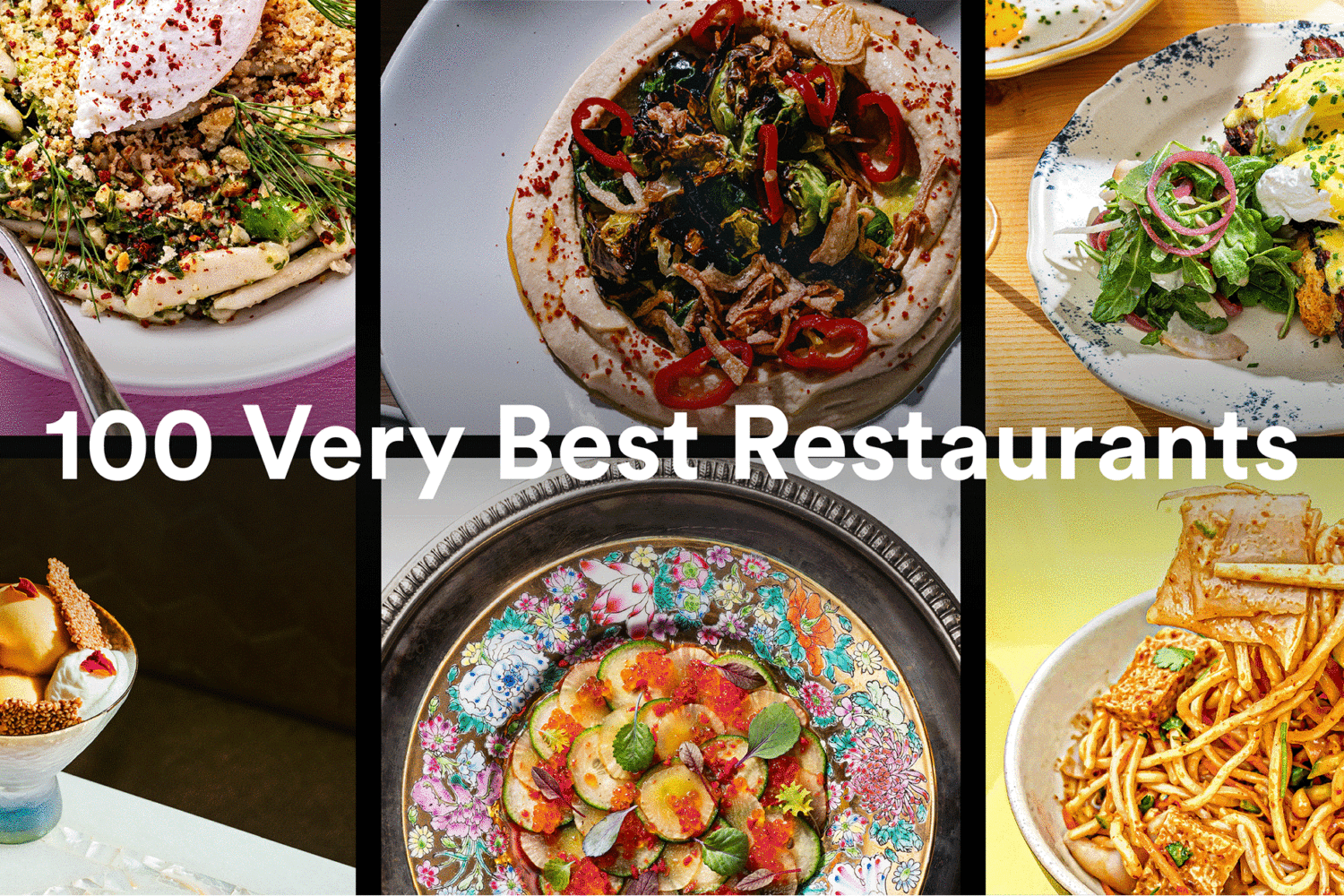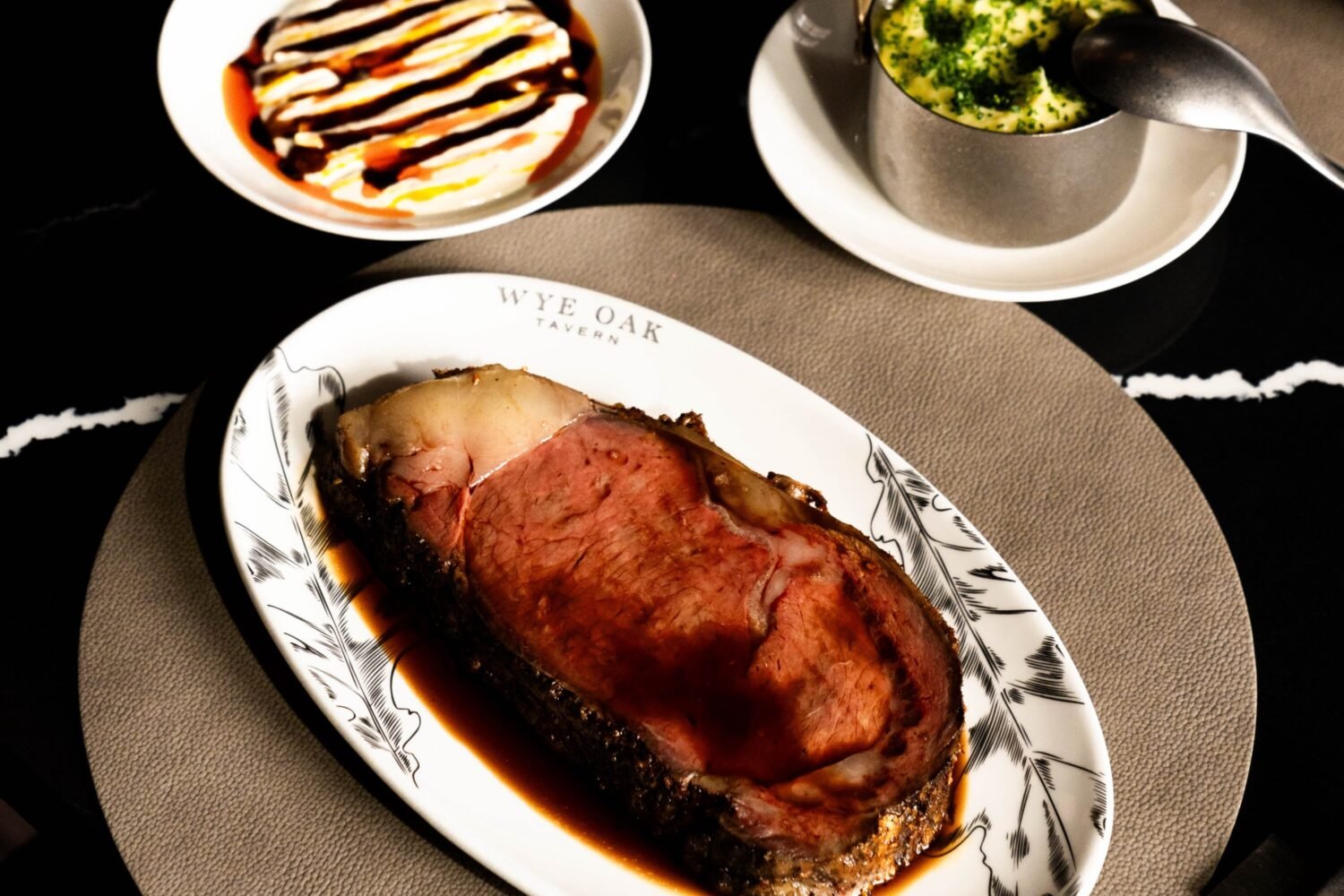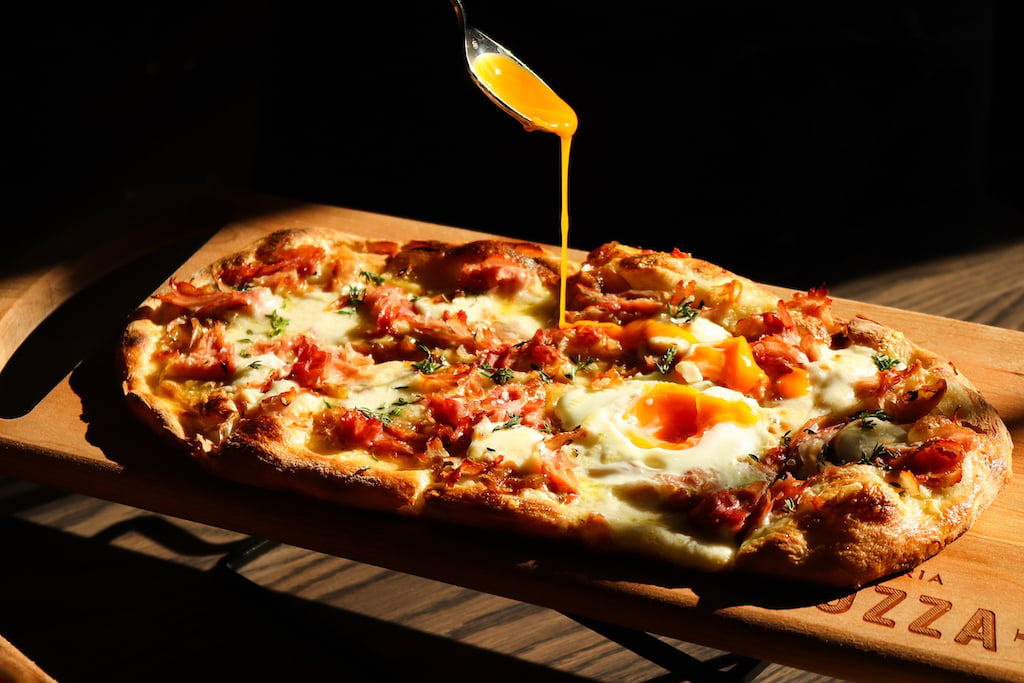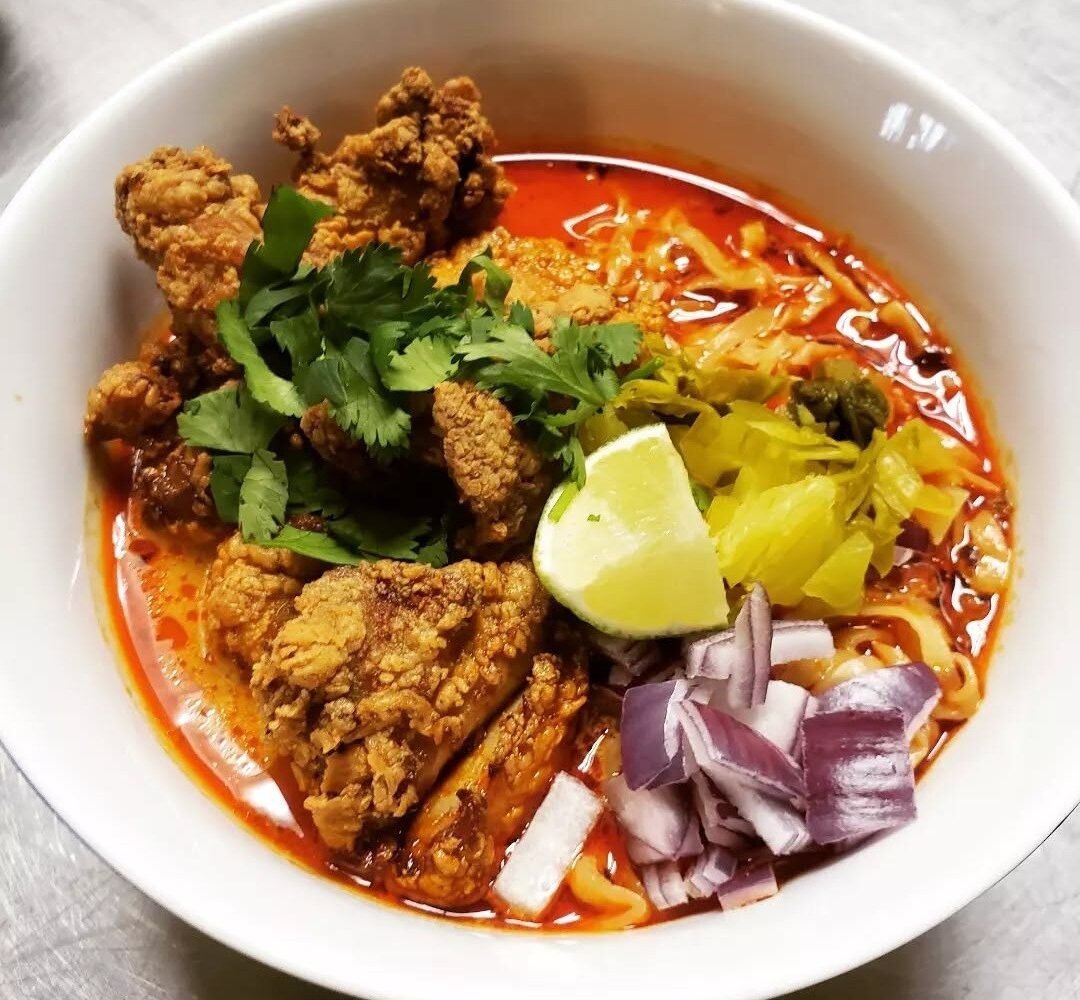
The chef set down the first of three courses he’d spent the past couple of hours prepping and cooking. The four diners sitting at his communal table—two men and two women—leaned forward almost in unison to appraise the arrangement of elements on the plate.
“Looks good,” said one.
“Yum,” said another. “I’m glad I skipped lunch.”
The men and women were not paying customers. They were guinea pigs, chosen at random, for an experiment I conducted two years ago while researching a story about the meaning of “local” food. Three responded to a solicitation I posted on Twitter, and one allowed himself to be pulled in off the street.
The experiment?
To test one of the most cherished notions of the food world, namely, that great food begins with fresh, high-quality, ideally local ingredients.
Chef X prepared three plates of food for each participant.
Each plate was exactly the same—or so it appeared to the suddenly baffled men and women at the table: roast chicken with garlic and herbs, a mixed green salad with roasted beets and goat cheese, and kernels of corn shorn fresh from the cob and tossed with butter, onions, jalapeños, and chives.
“You want us to eat three plates of the same food?” one asked.
“Is this a metabolism study?” another said.
“Hmm,” said a third, wondering just what sort of crazy experiment I’ve subjected them to.
“All I’ll say at this point,” I told them, nodding in the direction of Chef X, “is that it ought to be delicious.”
Chef X smiled.
I didn’t tell them that one plate was prepared with ingredients from the Fresh Farm market in Dupont Circle, one with ingredients from the P Street Whole Foods, and one with ingredients from the nearest Giant.
Each plate of food, in other words, represented a different rung on the sourcing ladder. The farmers market stands at the top. Whole Foods occupies the middle (a high-middle for most shoppers, though a solid middle, or perhaps, lower-middle for most name chefs). Giant represents the low end–good enough for weeknight suppers, perhaps, but not usually the starting point for transcendent meals.
Only Chef X and I knew the source for each plate.
The panelists’ job, I told them, was to sample the three meals and tell me what they thought about them. I handed out score sheets so they could score each individual dish on a 1-10 scale (10 being excellent, 1 being terrible). I promised to tally the results at the end.
Begin, I said, encouraging them to jot their tasting notes in the section provided on their score sheets.
They dove in.
For the next 30 minutes, the room was quiet save for the sounds of knives and forks on plates, along with a few mmms and a couple huhs.
When the last score sheet was filled in, I added up the numbers and read them aloud.
Chef X was quietly stunned.
Both the season (summer) and style of cooking (simply prepared American food, in which the raw materials are treated only minimally) would seem to have given the farmers market plate a distinct advantage. But not only was it not the clear and convincing winner; it did not even win.
* * *
Dish by dish the panelists and I went through the meal, beginning with the sautéed corn. This ought to have been a category for the farmers market plate to shine, as anyone who has ever gloried in the sweet corn of summer in this area knows. Chef X told me the corn is of good quality, though not quite at the level he would have preferred for his own restaurant.
The panelists liked it. They just didn’t like it more than the plate made with corn from Whole Foods.
Two panelists told me they were slightly put out by the color of the corn from the farmers market, which was slightly paler than the one from the Whole Foods and noticeably paler than the one from Giant.
The grocery store corn was unmistakably yellow: the yellow of a highway line or painted curb.
This corn, said one, reminded him of the corn he grew up on. Not because of the taste; because of the color. The color said “corn” to him in a way that the farmers market corn (“pretty good”) did not. The corn plate he chose was the one made with Whole Foods corn, which was not as pale as the farmers market corn but sweeter and purer than the corn from the grocery store. A compromise choice.
The other panelist who also didn’t care for the pale color told me that she preferred the plate made with Whole Foods corn.
When I asked what she liked about it, she said that the flavor is a “little sweet and a little rich, too,” a combination she finds “wonderful.”
How was it that the farmers market corn came in at a tie with the corn from Whole Foods?
A possible explanation came from Chef X, when he revealed that he had to “make adjustments” to “try to level the playing field.”
The best thing to do with good sweet corn is to “just get on out of its way,” he explained, as if he were talking about a semi bearing down upon a poor smart car on an open road. This was his approach with the farmers market corn; he employed only a small knob of butter in the pan.
He used a big knob for the corn from Whole Foods, however, and about 50 percent more than that for the corn from the grocery store—“just to bring it up” to a palatable level.
The mixed greens with roasted beets and goat cheese was also a winner for Whole Foods, albeit by a slender margin. Here, again, was a plate that ought to have showcased the superior freshness of the farmers market ingredients, and yet there not only was not a clear-cut victory; there was not even victory.
Is this a testament to the quality of the product at Whole Foods? I wondered.
Not quite.
The panelists pretty clearly preferred the greens from the farmers market to those of either Whole Foods or the grocery store.
The beets, however—at least between those of the farmers market and the Whole Foods; no panelist preferred the grocery store beets—are what gamblers would call a “push.”
I suggested to Chef X that what the Whole Foods beets proved is the enduring power of coarse salt, cracked black pepper, good olive oil and careful roasting, and he nodded. If a vegetable is “decent and not completely degraded,” he said, then these seasonings and techniques can make up for some inherent flaws. This is, after all, what they were designed to do.
He himself prefers the purity of a vegetable at its peak, when its natural sweetness can be teased to the surface with a minimum of enhancement. That was not the case with the farmers market beets, which he characterized as “pretty good, though not as good as what I can get from my sources.” As with the corn, he used more salt and more pepper and more olive oil on the Whole Foods beets to compensate for what they lacked intrinsically.
What tipped the balance for the plate from Whole Foods is the goat cheese.
Three of the panelists found the goat cheese from the farmers market to be too strong. “Too pungent,” said one. “Funky,” said another, wrinkling her nose. The grocery store goat cheese, by contrast, had too little flavor. The Whole Foods goat cheese was baby-bear right: just enough flavor, but not so much as to come across as pungent or funky.
Chef X was amused. Amused and a little disappointed. Not only did he personally prefer the taste of the farmers market cheese, he said, but he also wanted the panelists to know that it was the only ingredient in the entire tasting he was willing to welcome in his kitchen. What they deemed to be too pungent or funky, he said, was precisely what he is looking for. A cheese with character; a cheese that tastes like what it ought to. He drew an analogy with wine. In the wine world, a wine that displays all the characteristics of its grape and region or origin, is sometimes said to be varietally correct.
“This cheese,” he said, “is cheesily correct, if that makes any sense.”
The panelists laughed, but the notion was clearly perplexing to some of them. “What if your customers don’t like it?” one asked. “Like, it’s too strong for them, or tastes off or whatever?”
Chef X shrugged. “I like it. And I know it’s good. I know it’s what it’s supposed to be. I cook for my own palate.”
The scoring of the final preparation, the roast chicken, paralleled that of the beets. (The grocery store bird is out of the running. Had a supplier brought it to him, Chef X told me later, he would have tossed it in the trash. He used the words “bruised” and “defective.”)
One panelist had a strong preference for the farmers market chicken, which came from Joel Salatin’s renowned Polyface Farms. Another panelist also had a slight preference for this chicken. The other two preferred, by a slight margin, the chicken from Whole Foods—a Bell & Evans bird.
In its ability to maintain a large flock without benefit of antibiotics, Bell & Evans is a step up from the big factory farms that provide meats to chain grocery stores like the one in our experiment (for this reason, Chipotle has long been a customer). But it is two or three steps below that of Polyface, a small, family farm whose free-range, hormone-free birds are prized for their purity and depth of flavor. Or, as another chef at another time put it to me: for “tasting like chicken should taste.”
Given the demonstrated superiority of the Polyface product, the farmers market chicken ought to have been a decisive winner. Chef X could hardly believe what he was witnessing.
Ironically, it was his expert knowledge of preparing game and poultry, acquired over the course of his long career in a variety of kitchens, that enabled an inferior product to compete.
The high quality of the Polyface chicken, Chef X said, meant that the meat needed only some salt and pepper and thyme and garlic; as with the corn, his goal was to “get out of his own way.” As for the other two other chickens, he very much needed to get in the way. He opted to brine them, in addition—to subject them to a two-hour soak in a bath of salt, sugar, peppercorns, and thyme before cooking. The point of brining is to make a piece of meat juicier, sweeter, and, depending on the length of time the brine is allowed to go on, softer.
This it did. Though evidently not compensation enough in the case of the “defective” grocery store bird, which garnered no votes, the technique transforms the Whole Foods chicken. The panelists who preferred this preparation noted just how “juicy” and “sweet” the meat was—“even the white meat,” said one, “and I usually don’t like white meat.” It cannot hurt, also, that Chef X added a touch more butter and salt to its skin.
When the panelists have left, full and happy and weighted down with leftovers for dinner, I sat down with Chef X to discuss our findings.
In every instance, Chef X told me, the locally sourced—and markedly more expensive—ingredients were superior. And yet the tasters didn’t prefer the locally sourced plate of food.
Why?
If local is, as we so often are told, “inherently” better and fresher, then that difference ought to have shown up in the results, especially considering that the menu in its lack of saucing and simplicity of preparation favors the locally sourced plate.
Was this to say that fresh, high-quality food is not preferable to the alternative?
Not at all. It’s only natural that everyone who loves to cook, from a celebrated chef like Thomas Keller to a weekend warrior out to impress his buds with his skills at the grill, would want to get his hands on the best ingredients he can, assuming he can afford them.
But are high-quality, locally sourced ingredients an end point to great food? Or are they a starting point?
I told Chef X about an interview I did years ago with Inn at Little Washington chef Patrick O’Connell. One of his proudest moments, O’Connell said, came early in his career, long before his restaurant became a destination for food lovers from around the globe. It was a catering job, and he had been shipped a case of meat—frozen, and covered in frost. It should have been thrown out. And would have been thrown out, had there been time to replace it with something better. But a deadline loomed.
I no longer remember what dish O’Connell told me degraded meat became. What I remembered was the exuberance with which the chef told me that he decided to accept the subpar product as a challenge. As cooks for millennia had done, he would use every trick at his disposal to make it taste good.
“I’ll tell you what,” he said. “I cooked the hell out of that meat!”
O’Connell shared the story to illustrate what was, for him, an unfortunate trend among his colleagues—that too many of them think that putting high quality ingredients on a plate is enough, that sourcing has become, for some, an end in itself. “Our task as chefs,” he said, “is to elevate the quality of the materials.”
Which is precisely what you have done in this experiment, I said to Chef X. You’ve used your vast technical knowledge to turn “passable” ingredients into dishes that a panel of blind tasters preferred to those made with superior raw materials.
He seemed uncomfortable with this conclusion, with its implications, and pointed out that one of the panelists expressed a clear preference for the plate made with farmers market ingredients.
“What does that tell you?” I asked.
“It tells me she has a good palate,” he said. “She’s the kind of diner I want to cook for.”
“But the majority of panelists,” I said, “prefer what you did when you more aggressively elevated the materials.”
Chef X was reluctant to come across as dismissive of the other three panelists, but he suggested, in his circuitous and qualified way, in his very nice and smiling way, that these might not be the most discerning of diners.
That, in other words, they fell outside of his target audience for the restaurant.
Perhaps. But I had eaten at Chef X’s restaurant. It is not that rarefied a gastronomic experience, nor is it priced to appeal only to jaded, well-traveled palates. I don’t believe that Chef X’s audience is made up only—or even primarily—of discerning diners. I believe that, like most fine dining restaurants, the audience he serves (as opposed to the audience he targets) is much closer to the three diners he was at pains not to offend than to the one discerning foodie: diners who cannot appreciate the expensive, high-quality, locally sourced ingredients he and other chefs are so keen on using.
* * *
The experiment had implications, it seemed to me, for more than just fine dining. So, last year, I conducted a kind of corollary experiment, inviting an Indian chef to prepare a meal for four for $10 using only ingredients purchased from the same chain grocery store.
He accepted the mission, emailing me a proposed menu: palak paneer, chana masala, and chicken curry.
Two days later, I met him at his home kitchen, where the ingredients have already been set out on the counter: canned chickpeas, boxed tomatoes, frozen spinach, a package of chicken breasts, a carton of cream. Nothing fresh. Nothing to get excited about. The paneer was a ringer–it came from the kitchen at his restaurant.
Over the next hour, he set to work transforming the subpar materials into a meal, calling upon a variety of spices and cooking methods and a few time-tested tricks.
The chickpeas, simmering for more than 40 minutes, became sticky and rich. The smell was wonderful.
The chicken, too, smelled great, the boxed tomatoes the base for a thick and aromatic curry.
The transformation of the spinach was the most astonishing of all. Two-thirds of the way through cooking, or about 35 minutes in, the chef commenced a rigorous back-and-forth motion with his spatula, pushing the frozen leaves mixed with cream to the rear of the pan and then into the center, over and over and over again. This technique is called bhuno-ing, or marrying. He married the vegetable and the cream. After several minutes, the spinach, which had been a dull, dark green, turned lustrous.
The effect was magical, and so, too, was the taste, I told him when we sat down to test his efforts.
It would be hard put to distinguish this dish from the same dish in many restaurants, I said, diving back into the bowl for seconds.
The chef looked on, bemused by my surprised delight at his ability to coax so much deliciousness from such humble materials.
“It’s just cooking,” he said.



